Gardens and farms, green roofs and landscaped buildings are becoming more a part of the urban landscape in Japan. We look at projects in Osaka, and a Tokyo rail company has placed garden allotments on train station rooftops, greening the city while allowing commuters to connect to the land and grow their own vegetables.
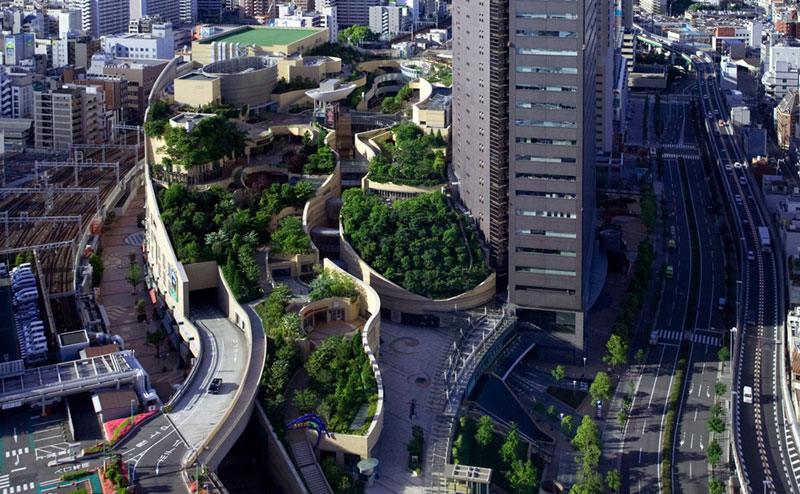

Osaka’s Namba Park
In a new commercial district in Osaka adjacent to Namba Train Station, the first stop from Kansai Airport, owner Nankai Electric Railway asked Jon Jerde to create a gateway that would redefine Osaka’s identity.
Jerde conceived Namba Parks as a large park, a natural intervention in Osaka’s dense and harsh urban condition. Alongside a 30-story tower, the project features a lifestyle commercial center (with 120 tenants) crowned with a rooftop park that crosses multiple blocks while gradually ascending eight levels.
In addition to providing a highly visible green component in a city where nature is sparse, the sloping park connects to the street, welcoming passers-by to enjoy its groves of trees, clusters of rocks, cliffs, lawn, streams, waterfalls, ponds and outdoor terraces. Beneath the park, a canyon carves an experiential path through specialty retail, entertainment and dining venues.
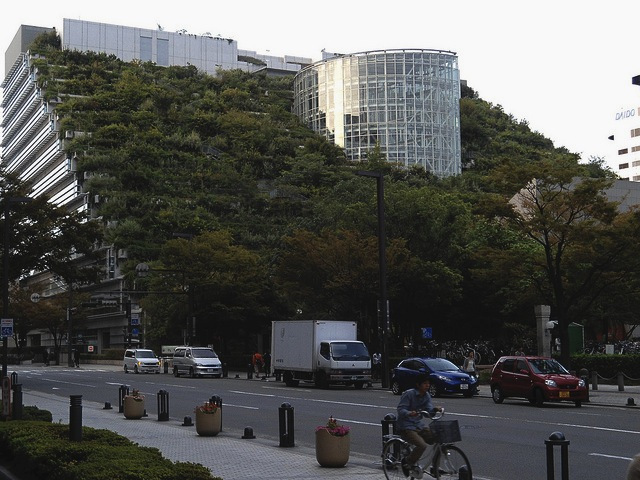

ACROS Green Terrace in Fukuoka
Built into Tenjin Central Park, a building displacing a plaza, architect Emilio Ambasz created the “image of a mountain,” a 14-terraced green roof, sloping down over one million square feet of office and commercial space in the Prefectural International Hall in Fukuoka City.
In Japan, the average annual temperature has increased by 3°C in the last century – mostly due to the urban heat island effect and global warming. Green roofing has been a major strategy in pollution absorption, stormwater management, and general air quality improvement in urban areas. Green roofs have provided heat retention and general energy efficiency in all kinds of settings, as well.
The Fukuoka example was established in 1994 with 35,000 plants representing 76 different local species. Irrigated using a drip system, water flows downhill as if it was a mountain, with the possibility of blackwater irrigation during drought.
Urban Farming on the Rail Station Roofs Across Japan
Moreover, Tokyo has introduced policies that require green roofs installed on 20% of all new flat roof surfaces on public buildings exceeding 250 square meters, and 10% of all flat roofs on private buildings exceeding 1,000 square meters. This results in the construction of around 50,000m2 of green roofs annually — with some interesting twists.
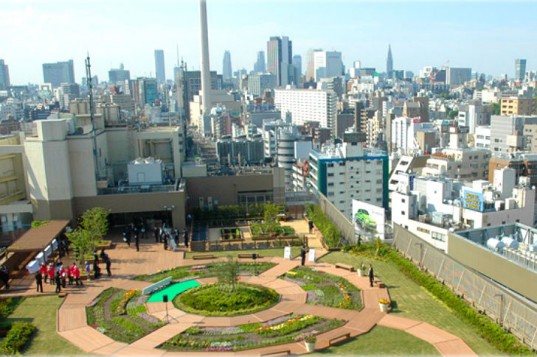

Urban dwellers who don’t have the time or space to garden can rent a plot in a series of community farm plots on top of train stations. There are five “Soradofarms” started by the East Japan Railway Company, with many more planned.
The first and largest, also known as a Machinaka Vegetable Garden, was built on top of the Ebisu station in Tokyo over four years ago. Now there are thirteen stations around the country with operating gardens or gardens in the works soon to be rented. The East Japan Railway Company has plans to build community gardens on top of or near each one of its stations in Japan soon. The railway is also working in conjunction with entertainment company, Ekipara to create these rooftop gardens.
“We’re promoting the greening of the city,” said Makoto Kawada in FastCoExist, a spokesperson for East Japan Railway Company, which runs train lines throughout Japan. “We started this vegetable garden business out of a desire to contribute to the environmental maintenance and the revitalization of the area along the train line.”
Spaces are quite small–the Tokyo garden is a little over 500 square feet–and they’ve been popular, there tends to be a waiting list to get a plot. A basic space costs around $980 for the year.
The train station provides standard garden tools, seeds, and some regular weeding. Anyone who hasn’t gardened before can get expert advice, and people who don’t have much time to take care of their plants can get help with things like checking for bugs or harvesting vegetables.
Sources



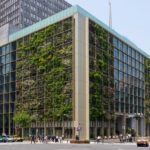
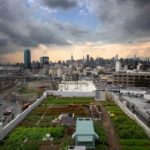

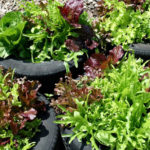






Pingback: Post D — A speculative environment – Wealth For Waste
I want to get a training on roof Top Garden.
Pingback: How Cities Can Build Affordable Housing | WilderUtopia.com
Manignificent topic about gardens, I really hope you could post another topic about this coz im really interested. Now Im Inspired by your post.